Definition
Rickets is a bone disorder caused by a deficiency of vitamin D, calcium, or phosphate. Rickets leads to softening and weakening of the bones and is seen most commonly in children 6-24 months of age. Vitamin D promotes the absorption of calcium and phosphorus from the gastrointestinal tract. A deficiency of vitamin D makes it difficult to maintain proper calcium and phosphorus levels in bones, which can cause rickets.
History
Roman descriptions of individuals with rickets can be found as early as the second century, and in the 1640s, the condition was well documented as a common bone ailment across England. Unfortunately, the scientifically proven cause of rickets was not identified until the 1920s, and by the 1930s, public-health initiatives recommended fortifying milk with vitamin D and cod-liver oil as a nutritional supplement for young infants and children. This led to a near eradication of rickets in the United States and other industrialized nations. Unfortunately, rickets has made a comeback and is still common in less-developed nations. Moreover, for a variety of reasons, it is seen more frequently amongst infants and children living in industrialized nations, often among more affluent populations.
Epidemiology of rickets
United States statistics
In the United States, vitamin D deficiency rickets does not generally occur in infants fed proprietary infant formulas, because both formula and cow milk sold in the United States contain 400 IU of vitamin D per liter. Accordingly, except in pediatric patients with chronic malabsorption syndromes or end-stage renal disease, nearly all cases of rickets occur in breastfed infants who have dark skin and receive no vitamin D supplementation.
International statistics
The incidence of rickets in Europe is similar to that in the United States. In sunny areas, such as in the Middle East, rickets may occur when infants are bundled in clothing and are not exposed to sunlight. In some parts of Africa, deficiency of calcium, phosphorus, or both in the diet may also lead to rickets, especially in societies where corn is predominant in the diet.
The frequency has been increasing internationally. Possible reasons include recommendations for children to wear sunscreen while outdoors and a tendency for children to spend more time indoors, watching television or playing electronic games, instead of playing outdoors.
Rickets
Types of rickets
There are various types of rickets:
Nutritional Rickets – Due to dietary deficiency of calcium, Vitamin D. You can correct it with including good sources of Calcium, Vitamin D, phosphorus.
- Sources of Vit D include sunlight, fatty fish, milk, mushrooms
- Sources of Calcium include Milk and products, gingelly seeds, Ragi, tofu, soy milk, figs, rajgeera (Amaranth seeds), Almonds, figs etc.
- Sources of phosphorus include milk and products, ricebran, pulses and legumes, rajgeera (amaranth seeds), pumpkin seeds, colocasia leaves, gingelly seeds, carrot , bajra, maize etc.
Hypophosphatemic Rickets – As the name suggests this particular form of Rickets is caused due to low levels of phosphate. Bones become painfully soft and pliable. It is caused by a genetic dominant X-linked defect in the ability for the kidneys to control the amount of phosphate excreted in urine. It is not caused by Vit D Deficiency. Children suffering from this type of Ricket show obvious symptoms by the time they are 1 year of age. Treatment is generally through nutritional supplementation of phosphate and active form of Vit D.
Renal Rickets – Caused by a number of kidney disorders. Persons suffering from kidney disorder have decreased ability to regulate amounts of electrolytes lost in urine which includes electrolytes like calcium and phosphate. Thus, these individuals develop symptoms similar to those of rickets
Risk factors of rickets
Factors that can increase a child’s risk include:
Dark skin: Dark skin doesn’t react as strongly to sunshine as does lighter skin, so it produces less vitamin D.
Mother’s vitamin D deficiency during pregnancy: A baby born to a mother with severe vitamin D deficiency can be born with signs of rickets or develop them within a few months after birth.
Northern latitudes: Children who live in geographical locations where there is less sunshine are at higher risk of rickets.
Premature birth: Babies born before their due dates are more likely to develop rickets.
Medications: Certain types of anti-seizure medications and antiretroviral medications, used to treat HIV infections, appear to interfere with the body’s ability to use vitamin D.
Exclusive breast-feeding: Breast milk doesn’t contain enough vitamin D to prevent rickets. Babies who are exclusively breast-fed should receive vitamin D drops.
Causes of rickets
Your body needs vitamin D to absorb calcium and phosphorus from food. It can occur if your child’s body doesn’t get enough vitamin D or if his or her body has problems using vitamin D properly. Occasionally, not getting enough calcium or lack of calcium and vitamin D can cause rickets.
Lack of vitamin D
Children who don’t get enough vitamin D from these two sources can develop a deficiency:
- Your skin produces vitamin D when it’s exposed to sunlight. But children in developed countries tend to spend less time outdoors. They’re also more likely to use sunscreen, which blocks the rays that trigger the skin’s production of vitamin D.
- Fish oils, fatty fish and egg yolks contain vitamin D. Vitamin D also has been added to some foods, such as milk, cereal and some fruit juices.
Symptoms
Signs and symptoms of rickets may include the following:
- Baby is ‘floppy.’
- Bone pain.
- Bone tenderness.
- Bones break easily.
- Costochondral swelling – prominent knobs on the bone between the ribs and the breast plate.
- Harrison’s groove – a horizontal line visible on the chest, where the diaphragm attaches to the ribs.
- Low calcium blood levels (hypcalcemia).
- Older children may have knock knees (genu valgum).
- Soft skull (craniotabes).
- Low physical growth (height and weight) may be affected.
- There may be spinal, pelvic, or cranial deformities.
- Toddlers may have bowed legs (genu varum).
- Uncontrolled muscle spasms, which may affect the entire body (tetany).
- Widening wrists.
- Symptoms vary in severity and may be intermittent.
Complications
If it is left untreated lead to:
- Failure to grow
- Abnormally curved spine
- Skeletal deformities
- Dental defects
- Seizures
Diagnosis and test
The diagnosis is achieved in the following ways:
Blood tests – measures levels of calcium and phosphorus. Levels of alkaline phosphatase may also be high.
Arterial blood gases – checks how acidic the blood is.
X-rays – these may reveal calcium loss in bones, or alterations in the structure or shape of the bones.
Bone biopsy – this can confirm rickets (rarely used).
Physical symptoms of rickets, such as bowed legs or a soft skull, will also be checked; however, these are not reliable enough to use on their own.
Treatment and medications
- Simply, treatment focuses on increasing the patient’s intake of calcium, phosphates, and vitamin D. This may involve exposure to sunlight, consuming fish oils, and ergocalciferol or cholecalficerol (forms of Vitamin D).
- Exposure to ultraviolet B light and consuming calcium and phosphorus is usually enough to reverse or prevent rickets.
- If rickets is caused by bad diet, the patient should be given daily calcium and vitamin D supplements, an annual vitamin D injection, as well as being encouraged to eat vitamin D rich foods.
- Treating genetic rickets – the patient will be prescribed phosphorus medications and active vitamin D hormones.
- Other medical conditions – if rickets has an underlying medical cause, such as kidney disease, that disease needs to be treated and controlled.
What is the prognosis for rickets?
Outcomes for children with nutritional rickets are excellent, especially if diagnosed early. Appropriate supplementation with calcium and vitamin D will lead to healing of the bony defects within days to months. Severe bowing, seen in longer-standing cases of rickets, may also resolve over a number years without requiring surgical intervention. In patients with very advanced disease, however, the bony changes may be permanent.
Prevention of rickets
Estimating the exact vitamin D needs of each human is very difficult, because it is hard to measure how much of the vitamin is synthesized in the skin via sunlight.
In countries that are not near the tropics and sunlight intensity is lower, it is important to provide a supplementary intake of vitamin D to prevent rickets.
This may involve:
- Enriching milk, baby foods, and some other food products
- The administration of a daily vitamin D supplement
- Massive doses of vitamin D when it is impossible for socioeconomic reasons to provide a vitamin supplement
In areas with a lot of sunlight, the best way to prevent rickets is to expose the child to the sun.
While exposure to sunlight is a good source of vitamin D, it is important not to overdo it – excess sunlight exposure can lead to sunburn and eventually skin cancer.
 Diseases Treatments Dictionary This is complete solution to read all diseases treatments Which covers Prevention, Causes, Symptoms, Medical Terms, Drugs, Prescription, Natural Remedies with cures and Treatments. Most of the common diseases were listed in names, split with categories.
Diseases Treatments Dictionary This is complete solution to read all diseases treatments Which covers Prevention, Causes, Symptoms, Medical Terms, Drugs, Prescription, Natural Remedies with cures and Treatments. Most of the common diseases were listed in names, split with categories.
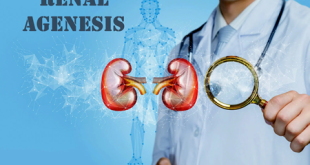

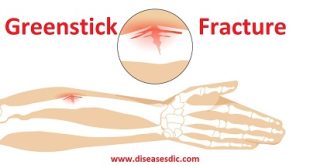
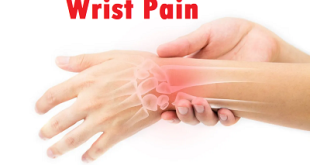
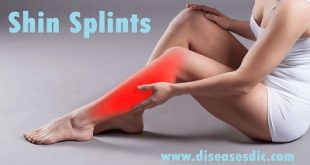
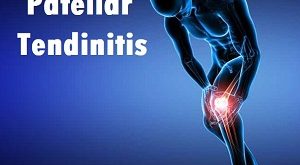


how age of he /she may be healed?.
If it is diagnosed early. Appropriate supplementation of calcium and vitamin D will lead to healing of the bony defects within days to months.
a patient has rickets and cyst also just behind of knee what should treat?
Baker’s cysts are fluid-filled lumps or sacs that form behind your knee. treating the underlying cause – such as medication for arthritis or rest and ice for torn knee cartilage. temporarily avoiding activities that aggravate your knee joint.